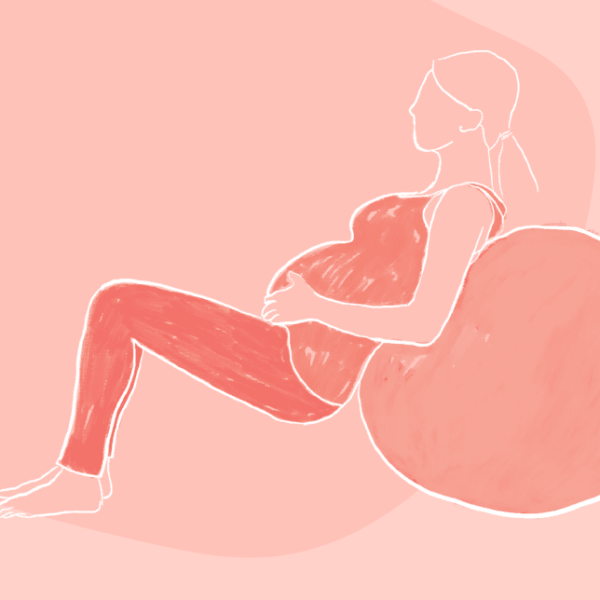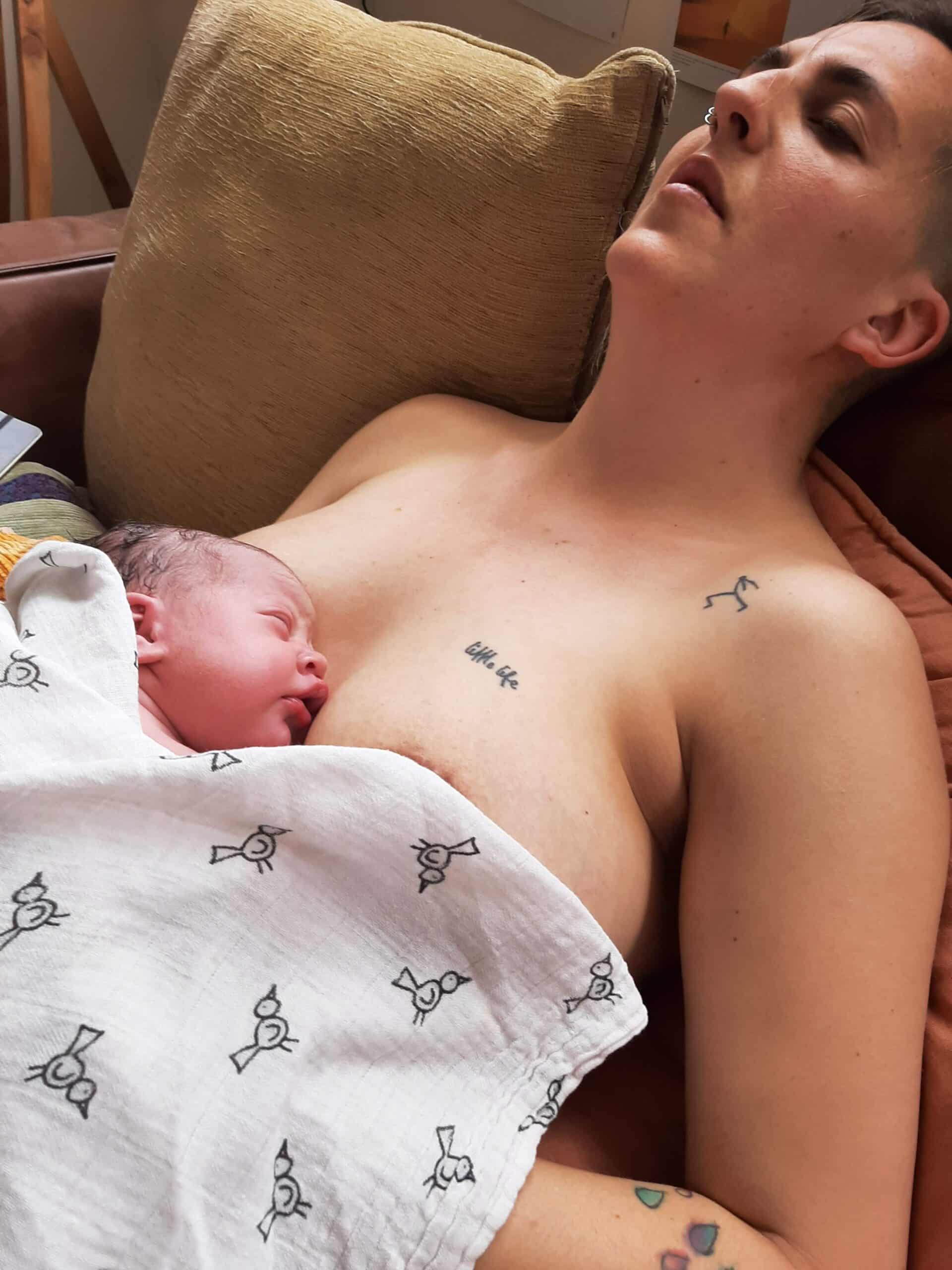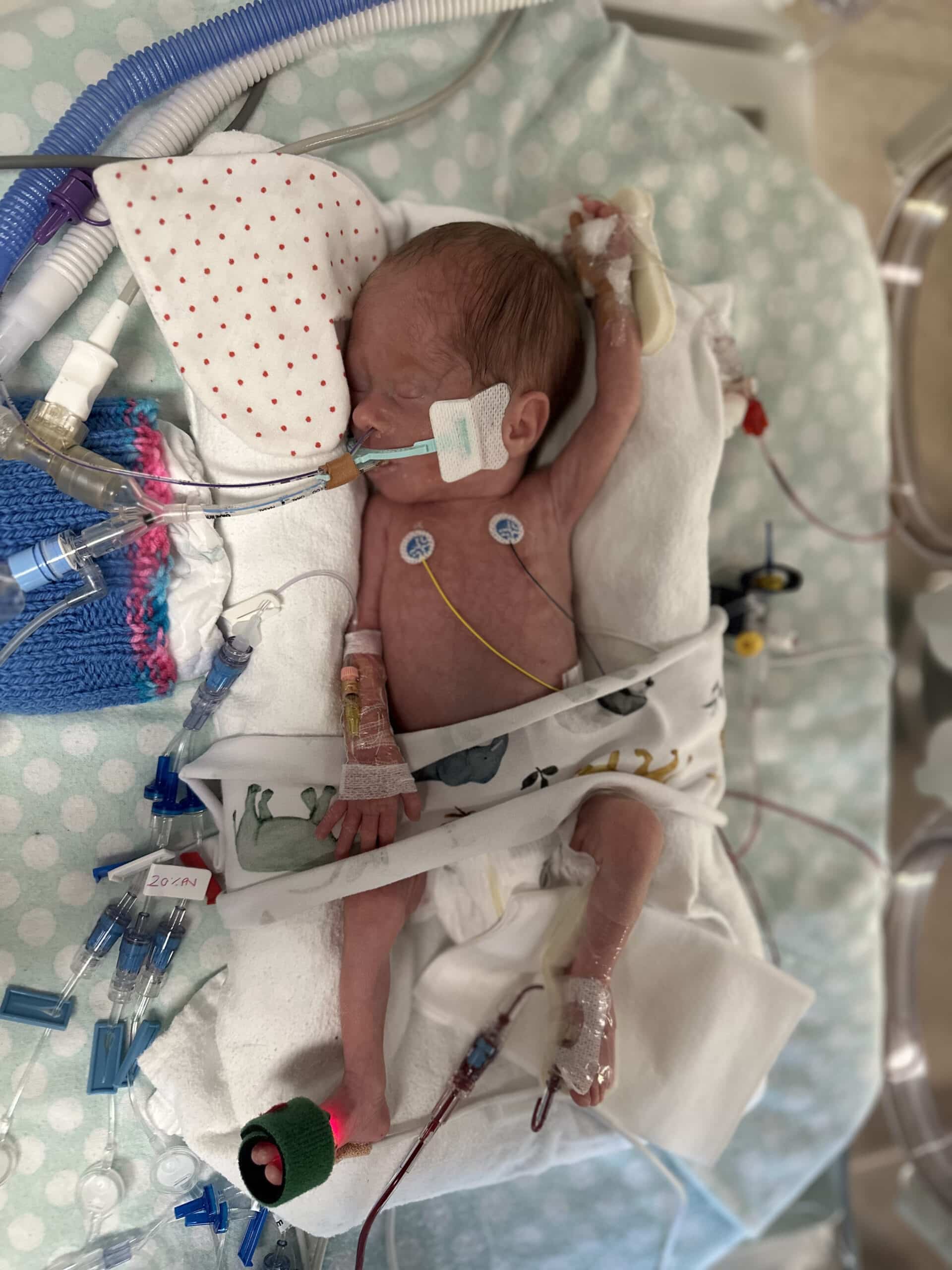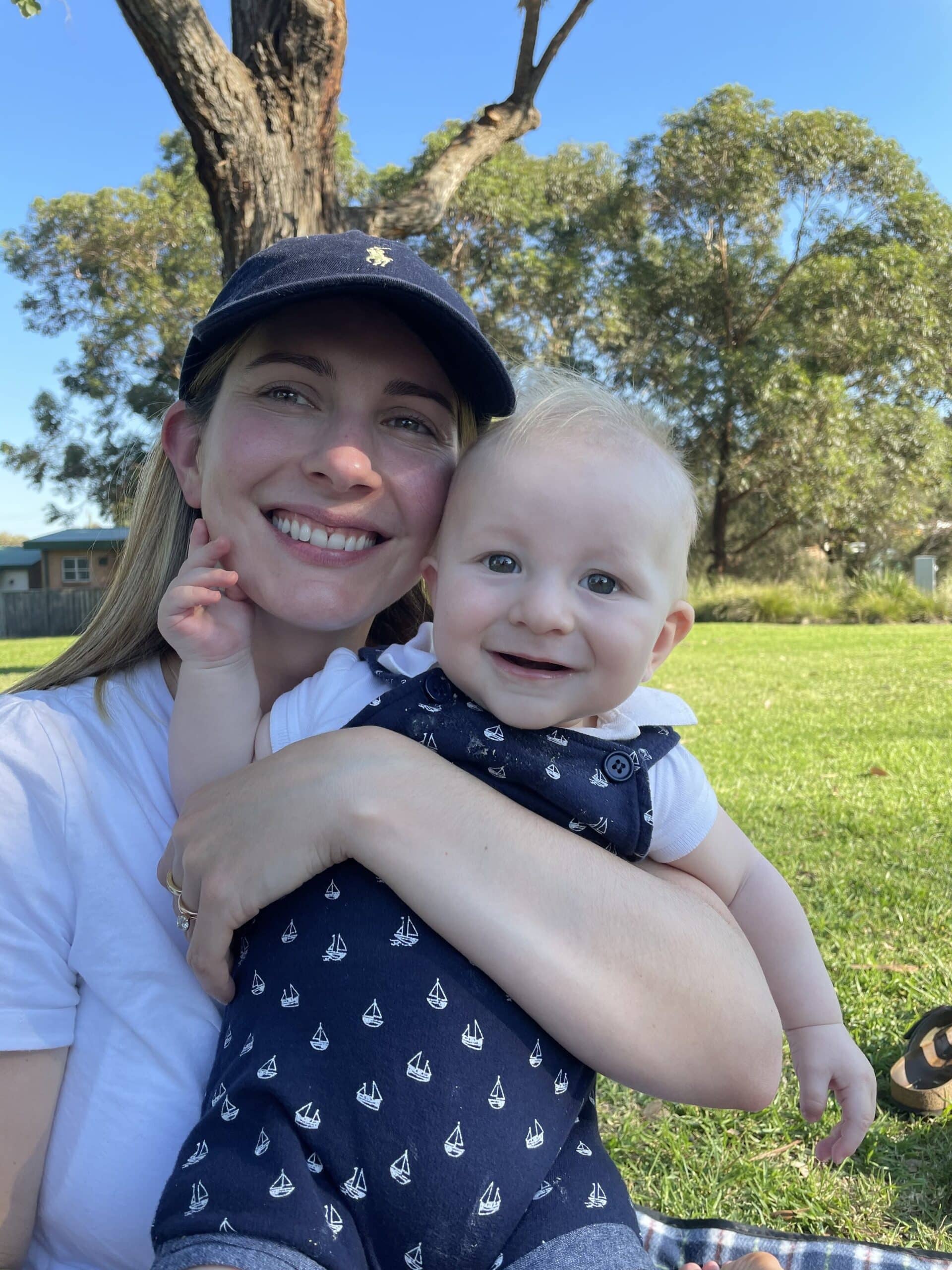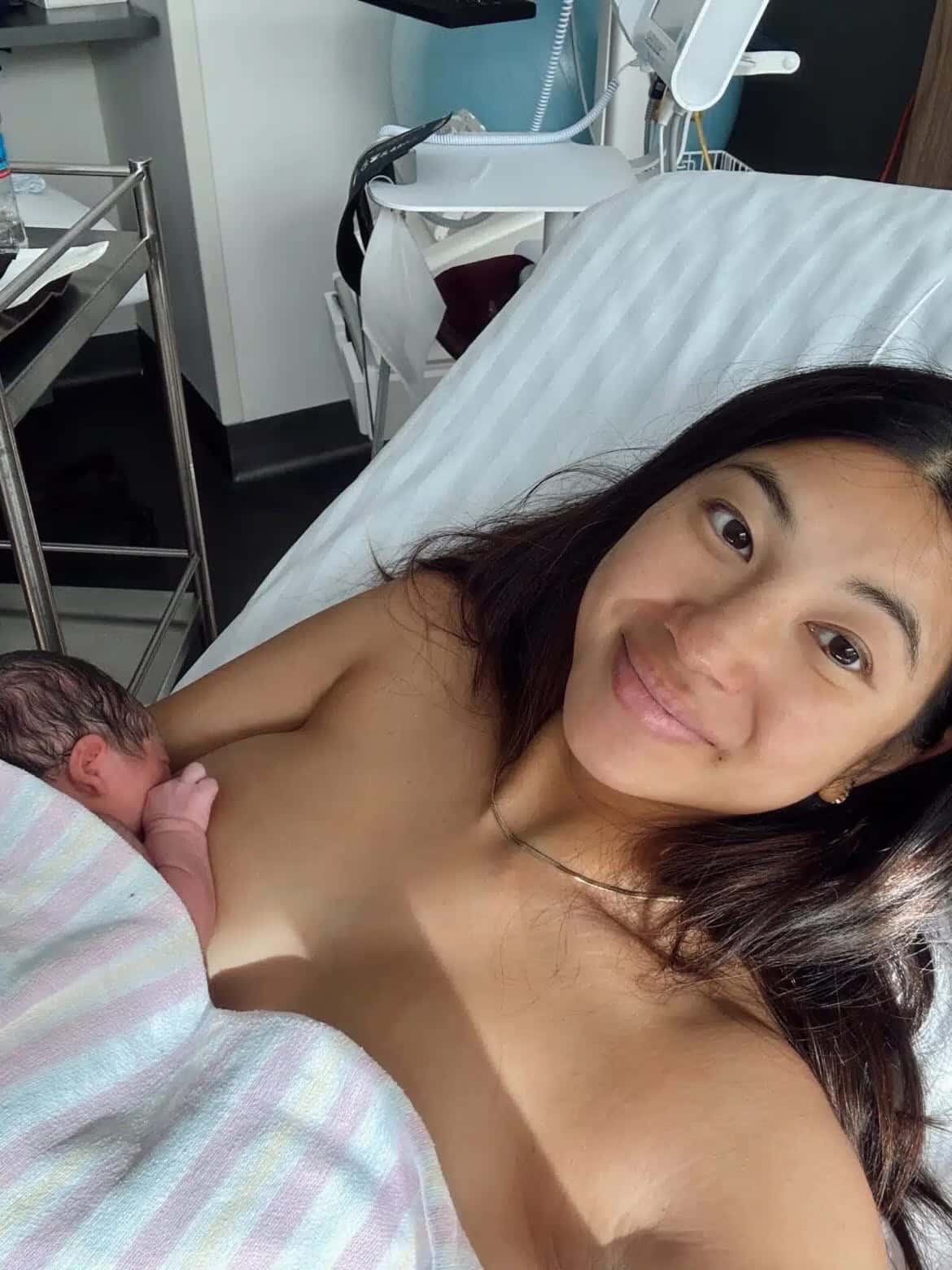Podcasts 555 | Tarrah Jordan, IVF Journey, velamentous cord insertion (VCI), caesarean
EPISODE 555
555 | Tarrah Jordan, IVF Journey, velamentous cord insertion (VCI), caesarean
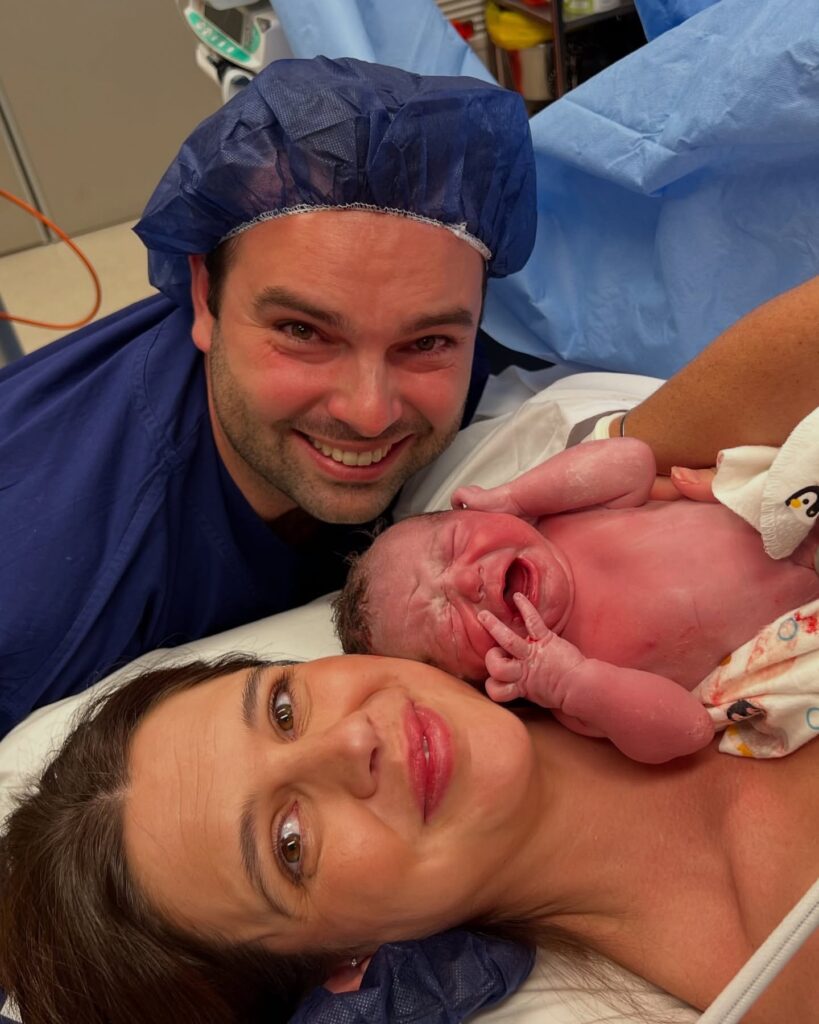
Tarrah’s story begins in September 2021 when she and Alexander made the difficult decision to postpone their wedding for a second time due to COVID complications. “We just kind of thought, you know what, we’ll just go for it and if it happens and I end up being pregnant at the wedding, that’s wonderful. But if it does take a while, which we had heard at least allow 12 months to fall pregnant, that it might not happen and then that’s fine too.” What started as an optimistic approach to conception quickly became a challenging journey that would test their resilience and ultimately lead them to their miracle baby.
Despite having no obvious fertility issues initially, the months passed without success, leading to the familiar heartbreak many couples experience. “A month is a really long time. So you kind of think that you’re doing everything at the right time and then to kind of get to the end and it being unsuccessful, it’s really hard to kind of swallow.” The emotional toll of repeated disappointment began to weigh heavily on both Tarrah and Alexander as they watched friends around them fall pregnant whilst their own journey remained unsuccessful.
After 12 months of trying naturally, Tarrah sought help from fertility specialist Dr Nicole Hope at New Life IVF. The initial testing revealed a low AMH (Anti-Müllerian Hormone) level of six, placing Tarrah in the bottom 10% for her age group in terms of egg reserve. “Of course, it’s just a guide, but it does mean that when you embark on a journey like IVF, it can be a little bit more tricky to get the embryos and get the eggs because I don’t have as many as potentially 90% of people my age.” This news was both enlightening and concerning, providing some explanation whilst highlighting potential challenges ahead.
The couple initially tried letrozole, a medication to promote stronger ovulation, but after three unsuccessful cycles, they decided to move forward with IVF. “I was one of those people that was like, I just want to go all out. I just want to do a round of IVF. And you kind of have this naive idea that, you know, IVF is there’s so much medical intervention. Like surely you do one round and you get the embryos.” This optimism, whilst understandable, would soon be tested by the realities of fertility treatment.
Tarrah’s first IVF cycle was a learning experience that highlighted the unpredictable nature of fertility treatment. From six eggs collected, only three were mature, and just two fertilised. “You’re so naive. You just think, great, I got six eggs, that’s six embryos. Like that’s just kind of what you think at that point. So to feel like it just completely dropped down to two… it just really hit.” The emotional and financial toll of repeated cycles became apparent as Tarrah and Alexander faced the reality of needing multiple rounds. “If you had told me that I had to go through 10 rounds of IVF to get our beautiful baby, I would never have believed you. Like I thought one round, maybe two rounds.”
In January 2023, Tarrah made the pivotal decision to share her fertility journey publicly on social media. “I just needed to bounce off other people. And I just needed to know, you know, in something that feels so isolated, that you’re not alone and that there are other people that can relate and that are going through it.” This decision not only provided Tarrah with much-needed support but also created a valuable resource for others. “The way it sort of eventuated in the end is that I actually offered that support to other people as well. So we’ve been able to create this really, really beautiful community.”
Throughout their journey, various tests revealed additional factors that may have been contributing to their fertility challenges. Tarrah was diagnosed with the MTHFR gene mutation, requiring her to take a specific form of folate rather than standard folic acid. She also discovered she was a carrier for one of the coeliac genes, leading her to adopt a gluten-free diet. Perhaps most significantly, they discovered a DQ alpha gene mutation. “That in itself is a really new study… where my body and Alexander, my husband’s body sort of create a way too similar. So when we’re creating embryos, it can see that embryo as my own self, so my body will reject it.”
The financial pressure of repeated IVF cycles cannot be understated. “It’s so much financial pressure and it’s a huge upfront cost. Every round of IVF costs up of $10,000 depending on what you do.” Despite the Medicare rebate system in Australia, the upfront costs and additional treatments created significant strain. “Both Zena and I work full-time jobs and it’s amazing what you can do to actually sort of like find the funds to support something that you really do want. And you make little life adjustments and sacrifices.”
After several unsuccessful cycles, Tarrah finally saw her first positive pregnancy test following a double embryo transfer. “It was the first time I had ever seen two lines on a test. It gives me goosebumps just thinking about it now… we were just completely shocked.” However, this joy was short-lived as they experienced an early miscarriage or chemical pregnancy. Despite the heartbreak, Tarrah found meaning in the experience: “To find out that my body could hold a pregnancy was just it unlocked such a huge piece of our puzzle.”
Their next transfer, using their final PGT-tested embryo, resulted in their successful pregnancy with Aspen. However, even this pregnancy began with uncertainty. “I started testing quite early on… I had a completely negative test on day five. I had a completely negative test on day six… And on day seven, I remember distinctly, just did a test and I popped in the shower.” The faintest line appeared, leading to days of anxious waiting and testing to confirm the pregnancy was progressing.
The pregnancy brought its own challenges, including subchorionic haematoma causing bleeding throughout the first trimester. “Very early on I started bleeding again. And of course, when I saw that considering what happened the month prior, I was like, this is it. This is the end.” The condition, whilst common in IVF pregnancies, was incredibly frightening for someone who had already experienced loss. Later in pregnancy, velamentous cord insertion was diagnosed, requiring close monitoring for growth restriction.
Tarrah chose to work with obstetrician Dr Scott Schema, who had personal experience with IVF. “He has two IVF little girls himself. And so I felt like very heard and he understood the journey that we had gone through. And he made me just feel like our little embryo was the most precious little being.” This understanding and empathy proved invaluable throughout her pregnancy care.
Aspen was born at exactly 37 weeks via planned caesarean section due to low amniotic fluid levels. “During my caesarean procedure, Scott goes there’s next to no fluid in your belly right now. So we absolutely made the right call to get him out when we did.” Despite complications with the spinal anaesthetic during surgery, which resulted in Tarrah feeling more than expected during the procedure, the moment of meeting Aspen was magical. “He was born to a song by Phil Collins called You’ll Be In My Heart… it was just a really beautiful moment, he’s on my chest and that song is playing and I think Xander and I were just like so emotional.”
The recovery from caesarean section went better than expected, aided by early mobilisation and a special Pico dressing that promoted healing. “You know what, it’s actually been so much better than I ever could have anticipated… I think it was a couple of hours after the caesarean happened that I was like, look, I just want to get up and I just want to go wash my face, brush my teeth.” Breastfeeding established well, with Tarrah able to express colostrum before the birth and her milk coming in around day two or three.
Now, four weeks postpartum, Tarrah reflects on their long journey with gratitude and amazement. “Literally every five minutes, I will just, I’ll just stare at Aspen and cry because I can’t believe that he’s actually here… it’s just all of our dreams come true all at once.” The overwhelming joy of finally holding their long-awaited baby makes every challenge they faced worthwhile. “Honestly, even when he cries, I’m like, that’s so sweet. Like, look at you. I was like, look at your lungs. Look at them go.”
Tarrah’s advice for others on similar journeys emphasises the importance of advocacy and community support. The information and encouragement she received from her online community proved invaluable in navigating the complex world of fertility treatment. “There were many times that I would get information from the community and I would take that to my fertility specialist and have those conversations. So I certainly feel like with the people that have been following my journey actually felt like it led me in a pathway that was a little bit quicker than otherwise would have been.”
This episode offers hope to anyone struggling with fertility challenges whilst providing practical insights into the realities of IVF treatment. Tarrah’s honesty about both the difficulties and ultimate joy of her journey makes this essential listening for anyone navigating similar challenges or supporting others through fertility treatment. Her story demonstrates that whilst the path to parenthood may be longer and more complex than anticipated, the destination can be even more precious because of the journey taken to reach it.
Episode Sponsor
Categories
Related Products
-
The Birth Class
108 reviews$249.00The empowering online childbirth education program that will help you confidently prepare for birth.
Join the conversation
Sign up to get the latest updates, freebies, podcast releases straight into your inbox
@AustralianBirthStories
Follow along with us
@AustralianBirthStories
Follow along with us
@AustralianBirthStories
Follow along with us
@AustralianBirthStories
Follow along with us
@AustralianBirthStories
Follow along with us
@AustralianBirthStories
Follow along with us
@AustralianBirthStories
Follow along with us
@AustralianBirthStories
Follow along with us
@AustralianBirthStories
Follow along with us
@AustralianBirthStories
Follow along with us
@AustralianBirthStories
Follow along with us
@AustralianBirthStories
Follow along with us
